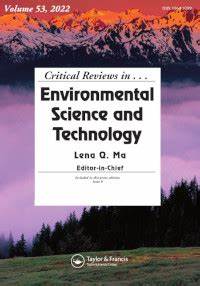毒理学中化学结构表征学习的新趋势:机器学习模型方法综述
IF 13.2
1区 环境科学与生态学
Q1 ENVIRONMENTAL SCIENCES
Critical Reviews in Environmental Science and Technology
Pub Date : 2025-07-03
DOI:10.1080/10643389.2025.2469868
引用次数: 0
摘要
使用结构-活性关系(QSAR)模型的计算机辅助虚拟筛选是减少昂贵的动物实验需求的替代方法。然而,传统的QSAR模型面临着重大挑战,例如“活动悬崖”现象和小数据集,这限制了它们概括和预测毒性的能力。本文研究了数字编码形式在分子及其相应模型中的转换,介绍了从分子描述符到基于深度学习技术的三种高级分子表示类型。我们强调了深度学习模型的重要性,它不仅可以捕获化学空间中的分子相似性来解决“活动悬崖”问题,还可以通过特征融合提高模型性能。图神经网络、卷积神经网络和大型语言模型及其相关的训练范式(如迁移学习)作为潜在的减少对特征工程依赖的替代解决方案,可以在数据处理不足等方面为毒性模型设置提供另一个机会。这项工作可以帮助潜在的深度学习建模者建立稳健的模型,为进一步开发和应用毒性预测模型奠定突破性的进展。本文章由计算机程序翻译,如有差异,请以英文原文为准。
New trend on chemical structure representation learning in toxicology: In reviews of machine learning model methodology
Computer-assisted virtual screening using structure-activity relationship (QSAR) models is a surrogate method for reducing the need for costly animal experiments. However, traditional QSAR models face significant challenges, such as the ‘activity cliff’ phenomenon and small datasets, which limit their ability to generalize and predict toxicity. This review examines transistion of digital encodings form in molecules and its corresponding models, introducing from molecule descriptors to three advanced types of molecular representations based on deep learning techniques. We highlight the importance of deep learning models that can not only capture molecular similarity in chemical space to address the ‘activity cliff’ problem but also improve model performance through feature fusion. As alternative solutions to reduce reliance on feature engineering potentially, graph neural network, convolutional neural network and large lanuage model and their related training paradigm such as transfer learning could give another opportunity for toxicity model setting in terms of data insuffient dealing etc. This work could help potential deep learning modelers to build robust model, setting the stage for groundbreaking advancements in further development and application of toxicity prediction models.
求助全文
通过发布文献求助,成功后即可免费获取论文全文。
去求助
来源期刊
CiteScore
27.30
自引率
1.60%
发文量
64
审稿时长
2 months
期刊介绍:
Two of the most pressing global challenges of our era involve understanding and addressing the multitude of environmental problems we face. In order to tackle them effectively, it is essential to devise logical strategies and methods for their control. Critical Reviews in Environmental Science and Technology serves as a valuable international platform for the comprehensive assessment of current knowledge across a wide range of environmental science topics.
Environmental science is a field that encompasses the intricate and fluid interactions between various scientific disciplines. These include earth and agricultural sciences, chemistry, biology, medicine, and engineering. Furthermore, new disciplines such as environmental toxicology and risk assessment have emerged in response to the increasing complexity of environmental challenges.
The purpose of Critical Reviews in Environmental Science and Technology is to provide a space for critical analysis and evaluation of existing knowledge in environmental science. By doing so, it encourages the advancement of our understanding and the development of effective solutions. This journal plays a crucial role in fostering international cooperation and collaboration in addressing the pressing environmental issues of our time.

 求助内容:
求助内容: 应助结果提醒方式:
应助结果提醒方式:


